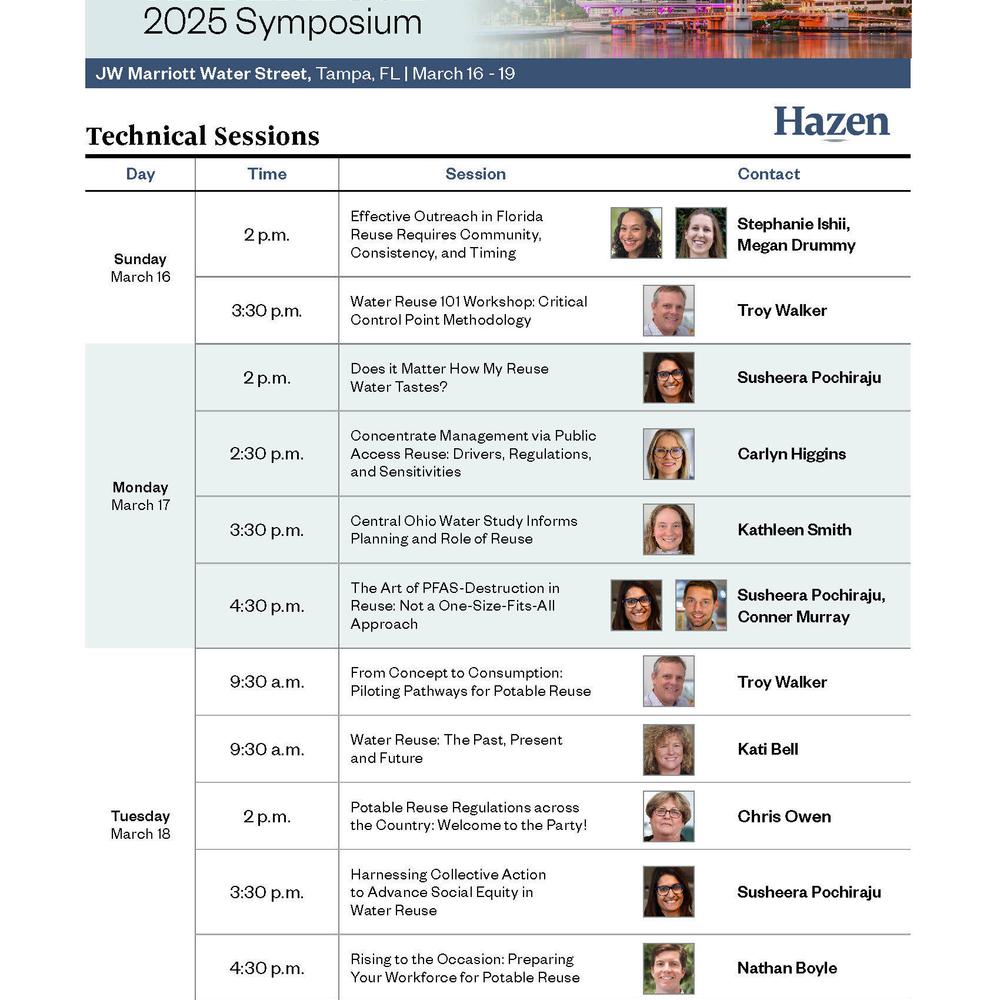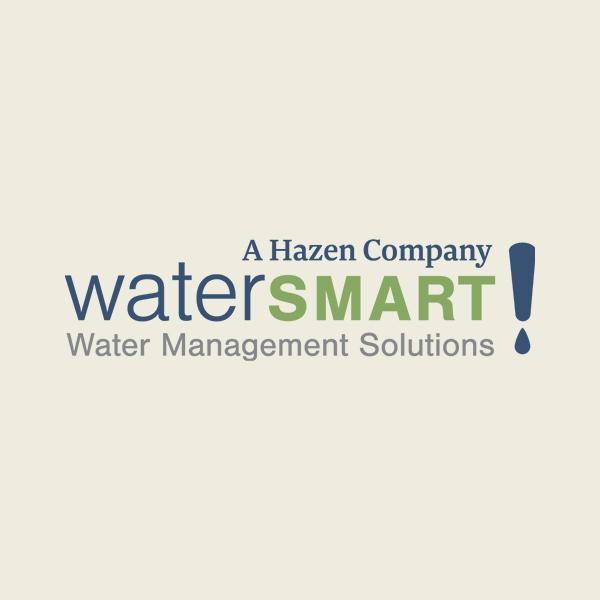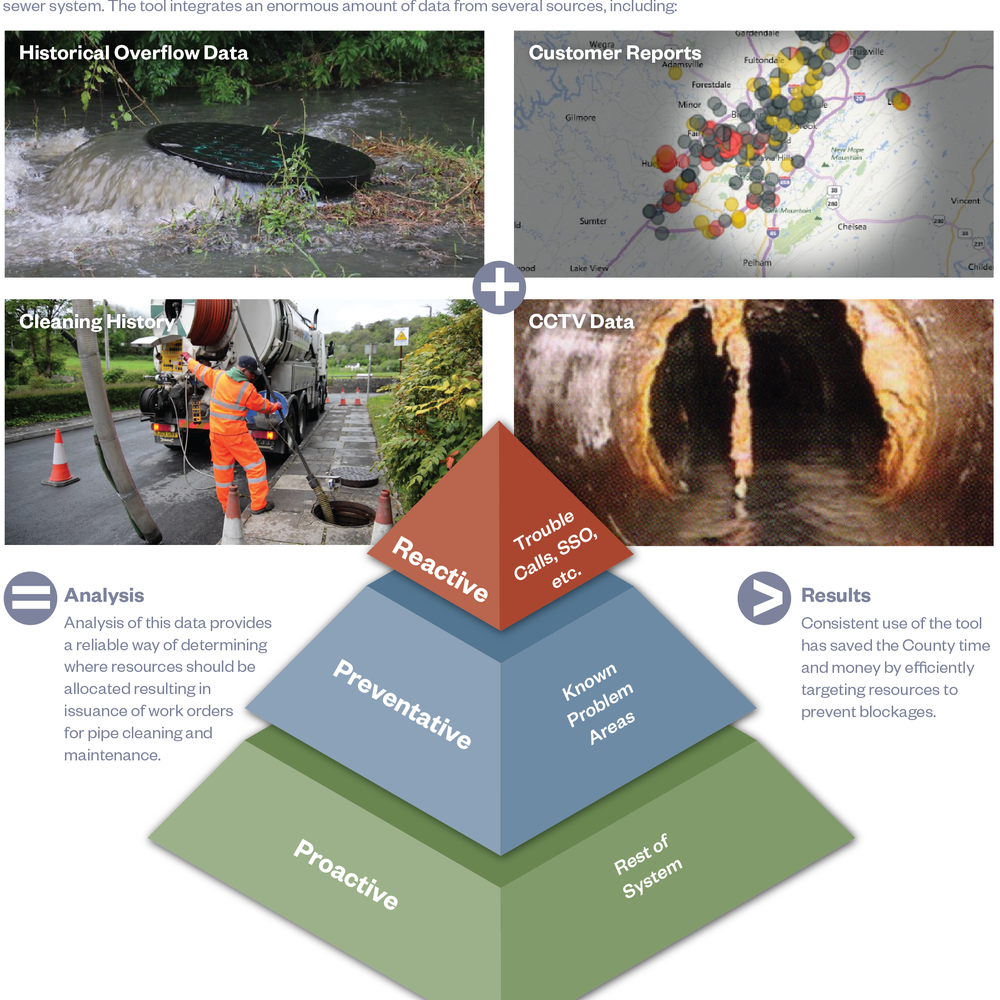Digital Tools to Optimize Biofiltration
Wendell Khunjar, PhD, PE, Associate Vice President; Yewei Sun, PhD, Scientist; Erik Rosenfeldt, PhD, PE, Associate Vice President - Hazen and Sawyer
Biofiltration, or Biologically Active Filtration (BAF), is a process innovation that can offer significant advantages over conventional filtration. A system calibrated on BAF principles uses tools that target specific effluent issues, harnessing natural processes to improve output metrics. BAF results have been demonstrated to enhance contaminant removal, improve aesthetic quality (taste/odor/color) and stability of output, decrease production of solids, and discourage formation of DBP. As with any developing technology, there are some noted potential drawbacks: studies to date have shown that under certain biological growth conditions, BAF may significantly increase headloss accumulation, and its manganese control capabilities appear less robust than those of conventional (chlorinated) filtration. Nevertheless, a well-designed and optimized BAF system – one that balances contaminant removal, particulate capture, and headloss accumulation – can maximize benefits while minimizing any negative impacts.

Certain recognized standards serve as a foundation for successful filter operations. Factors driving BAF design include media selection (size and type), filter depth and surface area, and filter loading rate. Once in operation, BAF performance will be impacted by upstream oxidation (e.g., ozone or chlorination), backwash operating procedures, and water quality parameters, including temperature, turbidity, total organic carbon (TOC), manganese, and nutrients. Given that warmer waters promote increased biological activity, biofilters may require operational changes that adjust for seasonal variation in temperature and water quality.
BAF is not a one-size-fits-all solution. Each system should be designed and calibrated according to the site-specific needs, desires, and existing processes of an individual unit or facility. Understandably, this can present roadblocks – utilities are reluctant to invest in a new process or technology whose success may depend on yet-untested factors. To assist designers in minimizing this potential margin of error, Hazen has developed a solution – our simulation model, HazenFilter, can inform the design of new biofilters, support conversion of conventional filters to BAF, and optimize existing conventional filtration/BAF operations.
HazenFilter has been employed both in pilot- and full-scale system simulations for a variety of purposes: results were used to inform new and improved filter design, to convert conventional filters to BAF, and to optimize other aspects of existing operations. Case studies include projects for Trinity River Authority (TRA, Texas), HRSD (Virginia), and NNWW (Virginia). Information regarding goals and specifics of each case study are included in Table 1, along with a description of HazenFilter integration.

HRSD seeks optimal BAF/GAC design
HRSD is currently in the full-scale implementation phase of the SWIFT program, which involves treating wastewater treatment plant effluent to drinking water standards. SWIFT results are achieved via an advanced water treatment train consisting of flocculation, sedimentation, ozonation, BAF, GAC, and UV disinfection. In the case of HRSD, team members developed an approach that combined the forecasting capabilities of HazenFilter with those of several other models, using resulting data to determine which specific combination of BAF and GAC design parameters would meet SWIFT water TOC targets at the lowest cost per life-cycle.
HRSD first calibrated its biofiltration model using SWIFT pilot data run at various design parameters, determining each setup’s corresponding range of effluent TOC. Data from this first step was then entered into Hazen modeling tools, which were used to determine the optimal frequency of media filter replacement to achieve and maintain SWIFT-compliant levels of effluent TOC. Along with BAF and GAC capital investment, media filter costs and recommended replacement frequency were entered as inputs, generating a projected life-cycle cost model for each potential scenario. Through use of HazenFilter and other modeling tools, HRSD was able to create site-specific plans and research-informed guidelines for optimal BAF EBCT while constructing their first full-scale SWIFT facility at the James River Treatment Plant.
HazenFilter model is not a “black box”—it is built on decades of environmental engineering theory from filtration and adsorption modeling and biofilm kinetics. HazenFilter was initially developed as a BAF optimization model by Hazen and Sawyer and Virginia Tech in collaboration with Hampton Roads Sanitation District (HRSD) and Newport News Waterworks (NNWW). The BAF optimization studies were subsequently published in a high impact academic journal. The model has been calibrated and validated with long-term seasonal data from both pilot- and full-scale treatment facilities. HazenFilter is a powerful “what if” simulator to test a range of design and operational scenarios.
HazenFilter can be calibrated using historical data on influent water quality, operational parameters, and filter design to predict particle and organics removal.

TRA asks for guidance on a BAF future
While exploring ways to improve disinfectant stability and finished water quality in their distribution system, the Trinity River Authority (TRA) zeroed in on a potential solution – a shift from abiotic (anthracite) filtration to BAF. Further research unearthed several documented challenges in converting traditional filter systems to BAF: a shallow filter design that limits media depth, reduced run times that raise filtration concerns, and uncertainty regarding the control of manganese, both during and after the conversion process. TRA turned to HazenFilter, harnessing the tool’s capabilities to create model scenarios in various media configurations in their attempt to determine the most efficient, cost-effective solution, and to estimate potential impacts of BAF conversion on headloss, run times, and TOC removal.
To set baselines, researchers calibrated HazenFilter using data from previous pilot efforts that matched hydraulics and performance. Once calibrated, HazenFilter was able to model various hypothetical scenarios, allowing the team to fine-tune test elements until they arrived at an optimal media configuration, one that allowed operation in both abiotic and biological modes as well as flexibility in BAF timing and implementation. These results aligned with the client’s perceived benefits of BAF, demonstrating superior TOC removal over abiotic filters, an increase in water stability, and the ability to control filter hydraulics and produce water on demand.

Lee Hall WTP (managed by NNWW)
HazenFilter assists NNWW with solving long-term hydraulics challenges
At Newport News Waterworks (NNWW), the suffocating heat of summer had historically driven a sharp increase in biofilm growth. This excessive biofilm appeared to have a direct impact on the facility’s hydraulic system, reducing summer production capacity at levels that could exceed 50%.
To troubleshoot the issue, NNWW researchers employed HazenFilter, calibrating the tool via full-scale historical data collected over eight months. This data focused on four filters whose loading rates ranged from 1.8 – 5.5 gpm/ft2 and included both low- and high-biological activity cases.
Once calibrated, HazenFilter was able to predict hydraulic improvement with increased media size.
This initial hypothesis was later proven via full-scale testing of different media sizes, ranging from 1 mm to 1.44 mm. In order to test multiple strategies, NNWW simultaneously conducted an extensive demonstration study to measure the impact of larger media combined with a low-level chlorine treatment.
Designed to balance pre-filter oxidation with viable in-media biological growth, results of this study demonstrated that the combination of pre-oxidation and a larger media size had a significant impact, with the average unit filter run volume increasing by a whopping 247%.
Streamlining Filter Surveillance With HazenOps
In addition to filtration modeling with HazenFilter, Hazen is a leader in filter surveillance – a technique used to diagnose and correct filter operations. Maintaining a filter surveillance program can improve general operational skills and increase the capacity and accuracy of troubleshooting efforts, particularly during major process changes such as optimization or conversion to BAF. Surveillance techniques include visual observations, media depth and gravel measurements, bed expansion measurements, floc retention analyses, spent filter backwash turbidity profiles, and sample collection for sieve analyses and acid solubility.
NNWW successfully implemented filter surveillance to troubleshoot headloss development. The evaluation revealed that most particles in the filter were stored in the top six inches of the media. For efficient operation, particles should be stored throughout the filter media. To improve particle distribution and filter hydraulics, the effective size of the media was increased. This change enhanced particle penetration and slowed the rate of headloss development.
Hazen recently developed HazenOps Filter Surveillance to streamline data collection, report writing, and data visualization. HazenOps allows operators to collect data in one place – including photos, field measurements, and lab results – using their phone or tablet. Data can also be collected offline without connecting to the internet. Once the data has been collected, HazenOps generates reports and emails operators automatically. Utility staff can also review data on web-based dashboard to investigate trends over time and across filters.










